Top 10 Moments of 2009
Joshua Cripps
As 2009 winds its way down, I’ve caught myself reflecting on the successes and failures, and the adventures and mishaps of the past year. For me 2009 was a year of great change, growth, and opportunity. I got to visit places I can hardly believe exist, and I got to do things I never imagined I would. But out of all the memorable moments of the last 12 months, a few things burn most brightly in my memory. I couldn’t keep the list to just ten, so without further ado, here are my Top 12 Experiences of 2009:
#12: The Humane Society Fundraiser
As some of you no doubt know, I also run a pet photography business called The Dog Photog. In April of this year I volunteered to help the Humane Society of Tuolumne County with a little fundraiser where folks paid $20 to have their pets’ portraits taken. In the two days of the fundraiser I ended up shooting 34 sessions, amounting to nearly 50 animals. There were cats and dogs and squeaky toys everywhere, and in between shooting one session and prepping for the next, there wasn’t one second of downtime. One of the most harried and hectic weekends I can remember, but in the end it all came together well and a lot of animal lovers went away happy.

#11: The month of October
Ok, so I know that an entire month doesn’t really count as a single moment or experience, but October was so great as a whole that I just had to include it in the list. The reason the month was so excellent is that it came with a streak of successful art shows.
San Carlos, Kennolyn, Monterey. Three full-on weekends; three great shows. These shows were a proving ground for some new ideas I had for my booth, my display, and my products. They showed me that I’m on the right track and that I can be successful in this art-show world. In fact, these shows were so good that between the three of them I had higher gross sales than I did at all of my shows in 2008 put together. As an emerging artist and business owner, it was extremely validating to have that kind of outstanding feedback.
So a big thanks from me to everyone who helped make those shows so sweet.
#10: Moving to Santa Cruz
To be honest with you, I can’t really consider the actual moving to be one of the highlights of 2009. It was exhausting, painful, draining, and to top it all off, I moved on my birthday. A sharp contrast to last year’s birthday watching elephants, rhinos and zebras in South Africa’s Kruger National Park. But I digress . . .
Anyway, it wasn’t the moving itself which was the #10 high point, but rather the simple fact of moving to a place with a thriving arts community, supportive local businesses, and an amazing array of scenic beauty. Since moving to Santa Cruz I’ve expanded my business and come in contact with a number of opportunities which simply aren’t available where I used to live in Sonora. By utilizing the help and knowledge of local artists, I’ve improved the quality of my prints, mats, and framed photos to a great degree. I’ve even been able to start offering my new type of mounted prints, which are available in very large sizes up to 30″x60″.
And possibly most importantly, moving to Santa Cruz has put me touch with a wonderful variety of scenic beauty. Lately I’ve been fanatical about shooting at a gorgeous location called Panther Beach, which is full of interesting rock formations that offer seemingly limitless ideas for new shots, like this one:

On top of that there are the redwood state parks and the world-famous Big Sur coastline, all of which I haven’t even tapped into yet. Which means that you and I can expect a huge number of new photos from these gorgeous places to come spilling out of my camera in the near future.
#9: Nearly Sliding to my Death at Panther Beach

In case you can’t quite tell what’s happening in the above photo, allow me to explain: that is a massive wall of water slamming into me as I attempted some shots of the waves coming over the distant rocks. That is my finger in front of the lens as I frantically grabbed at my camera. And the reason the world seems to be tilted is that I’m in the process of being knocked over by the wave. Was I ever in any real danger? Well, perhaps not here, but I do love this photo for illustrative purposes because it really helps tell the story of what I’ve been trying to achieve lately with my photography.I think many photographers, and certainly myself, struggle with originality. “How can I produce novel images in a world that’s been photographed millions of times?” This is one of my most pressing artistic questions. In my mind, one of the ways I can answer this question is by pushing myself farther. If I go farther than the average photographer is willing to go, then hopefully I’ll come back with images that stand out. What this has come to mean in practice is that lately I am willing to stand in the splash zone, to endure cold water and pounding waves in order to get the shot. Usually this isn’t a big deal. I come home soaking wet and a little chilly, but none the worse for wear, and often I have a cool photo to boot, such as when I got repeatedly drenched by large, crashing waves in order to snag a photo of the ocean froth running down the backside of these rock terraces:
Yes I came home wet, but it really wasn’t a big deal.
But on another night in almost the exact same spot, I was very nearly dragged down to a watery tomb by the fury of the waves. You see, I wanted to get a shot of some wonderful rock terraces as the ocean splashed up and then flowed back down them. But to get the composition I wanted I had to stand on an algae-covered slope with nothing between me and the ocean except more algae-covered rock. Not a terrible problem really, until a surprise wave somehow came up the slope, wrapped around behind me, and started flowing back to the ocean around my ankles. Naturally, standing on wet algae, I had exactly zero traction, and the force of the wave heading back towards the sea was just enough to start me sliding down the hill towards the ocean with absolutely no means of stopping myself.
And I tell you, slowly sliding towards a seething cauldron of white water is certainly a way to get your heart pounding. I was fairly terrified that I was going to go in, when all of a sudden my left foot nudged up against a tiny shelf of bare rock. It was just enough to give me some traction and I was able to ride out the rest of the wave. As soon as it was clear, I grabbed my camera gear and scampered clear up to high ground where I giddily remained while my adrenaline shakes subsided.
Thankfully there was a wonderfully detailed rock crevice where I ended up and I was able to execute (safely, nonetheless) one of my favorite photos of late:

#8: Glacial Calving in Aialik Bay
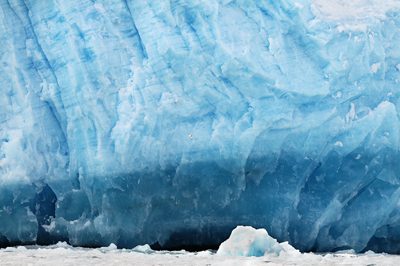
I’ve seen a number of glaciers in my life. Beautiful rivers of blue ice winding their way down from towering peaks, full of shapes and textures. In some special places, glaciers can come all the way down to the sea, where they constantly slough ice off their terminal face into the salt water. As you might expect, there are quite a few of these “tidewater” glaciers in Alaska, which is where I had my first enounter with one, the Aialik Glacier, in August of this year.
A boat motored us up a few hundred yards away from the face of the glacier and then shut its engines down so that we could hear the sounds of the ice. Constant creaks, groans, and pops issued from the glacier, and then everything now and again, and exclamation would sound as a huge chunk of ice, undercut by the sea, would break off and fall down into the water.
The sound this creates is indescribable and incredibly beautiful. If you can imagine a chunk of ice bigger than your house falling hundreds of feet into the ocean you may be able to get an idea of the roar this makes. It sounds like thunderclaps and shotguns, explosions and echoes. My words can’t do it justice. Hop on a plane to Alaska and experience this majesty for yourself.
#7: Publication in Canoe and Kayak Magazine

If you look really closely at the photo above, you can just barely make out my name on the left hand side. The reason my name is there in the first place is that I was hired by Canoe and Kayak magazine to do a photoshoot for them in September (for the December issue of the magazine).
The cool thing about this shoot (other than being nationally published, that is) is that the magazine contacted me totally out of the blue for this. The portrait is of a guy named Marty McDonnell who runs a river-rafting company out of Tuolumne County. Canoe and Kayak were looking for local photographers to do the shoot, ran a google search, and came across my webpage. And even though I didn’t have a single portrait in my portfolio, they were sufficiently impressed by my other work to give me first dibs on the gig. And of course I said yes to this outstanding opportunity.
It even turns out that I really enjoy doing this kind of editorial photography, and will be pursuing more of it in the future. And if it weren’t for this completely surprising call from Canoe and Kayak, I never would have known to try this.
#6: Creepy, end-of-the-world Adak
I had a chance to spend a few months in Alaska this summer, working out in the Aleutian Islands. Before I and the other crew members actually arrived on the island where we did our work, we spent some time sorting out a few last minute details in the town of Adak, on the island of Adak.
Now, I’ve traveled to quite a few strange places in the world, but Adak ranks right up there among the most bizarre and unreal places I’ve ever been. Imagine yourself in a movie about a post-apocalyptic world in which 99% of the people have been killed by a virus and you’ll have a pretty good idea of what it’s like to be in Adak.
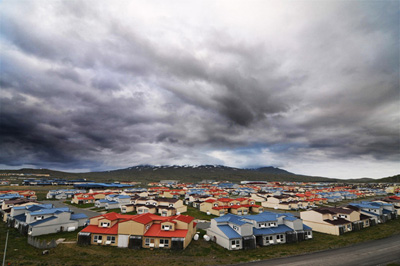
- All those houses? Yeah, they’re empty
There used to be US military presence in Adak, with about 5000-7000 troops stationed there. Then the base closed down in the late 90’s and the military pulled out, leaving behind all the housing and infrastructure but none of the people. Now there are about 70 hardy and unusual souls who live there year round, occupying a few of the houses. The rest of the town sits deserted and neglected, damaged by vandalism, and ravaged by the ferocious winter storms. When you walk through street after street of identical, broken down homes, you get the feeling you are the only person left alive in the whole town.
And not even when you enter the general store, where a few locals spend the day smoking and playing cribbage, and where you can buy a jar of peanut butter and a half gallon of milk for $17, are you relieved of the overwhelming sense of strangeness of the place. And that is why Adak will no doubt remain vividly in my memory for a long time to come.
#5: Whale-watching near the Farallon Islands

Whale-watching is a little like gambling: you pay to play, but if you don’t get anything for it, well shoot, you’re just out of luck. I’d been on one trip in the past where after a few hours of searching, my tour finally saw the flukes of humpback whale from 200 yards away. And even a whale looks pretty small from 200 yards. I had a another chance to go in Alaska, and there it was more of the same: we saw a number of whales, but they were all relatively far away and not up to much.
So when my wonderful girlfriend got tickets for the two of us to go whale watching out at the Farallon Islands near San Francisco, I was excited but didn’t let my hopes get up too far. But as it turned out, we hit the jackpot on that trip. We saw humpback whales, grey whales, and blue whales, all from as close enough to smell their krill-scented breath. And although humpbacks are my favorites because of their long fins, blue whales are quite simply astonishing. You just cannot conceive of their size and bulk. I couldn’t help but laugh in amazement at how big they are.
And if the whales weren’t enough to make it a stellar trip, we also saw sea lions, and even an oceanic sunfish. In my mind, this trip was comparable to the time I spent in South Africa last Fall: incredible animals in their natural environment, and an absolute privilege to share those passing moments with them.
#4: Feeling on top of the world on Gareloi Volcano
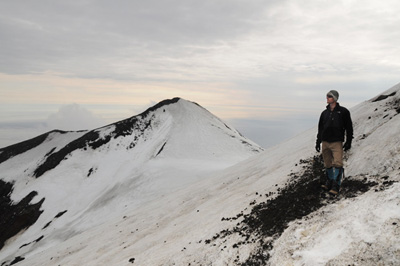
As I briefly mentioned back in highlight #6, I spent a few months working in the Aleutian Islands this summer. My team was stationed about 1200 miles down the chain on a volcano called Gareloi. The volcano dominated many aspects of our lives there: it shaped the weather, created the ecosystem, and simply loomed above us, it’s mile-high summit steaming and smoking 24 hours a day.
Every now and again the team would get a day off of work to explore the island, and on one fine day we attempted a summit of the volcano. Gareloi is completely uninhabited by humans; there are no trails, and as such we had to choose our own route to the top. This was simple, as there was only one way to go: up.
We only had to cover about 3 miles to get to the peak, but that also involved a one mile elevation gain. So it was a slog. To an elevation of about 1600 feet, Gareloi is covered in preposterously thick, knee- and sometimes thigh-deep grass. Our first few hours of the climb were spent forcing our way through that.
Once the grasses die out at higher altitudes, you’d think you’d be on easy street, but no, now you have to contend with the loose volcanic scree. For every few feet forward, we’d slide back one due to the crumbly, loose rock. But there was nothing for it other than to press on, slipping, sliding, and straggling our way every upward.
And so the hours dragged on, with the peak constantly looming above us, and yet never seeming to come any closer. Finally, as we started passing into patches of icy snow did we know that we were drawing near. At last we reached a point about 400 feet below the summit where all our forward progress was completely halted by a steep slope of impossibly crumbly rock. There was simply no way to get higher, for at every step the rock would break away and send us sliding back 10 or 20 feet.
Thus we ended our hike there, so close to the top we could taste it. One of our group actually found a way to the top by hacking footholds into a nearby ice field that ran up to the summit, but he said that by the time he got to the top he was so freaked out that none of the rest of us wanted to give it a shot.
Alas, we were unable to actually summit the volcano, but we couldn’t deny that where we stopped was incredibly amazing as well. We had an unbeatable view of Gareloi’s fuming south crater, as well as our beautiful neighboring islands of Tanaga, Amatignak, Unalga, and others. We could see the mesmerizing blue hues of the pacific ocean stretching out forever. And we finally had a bird’s eye view of our own wonderful Gareloi Island.
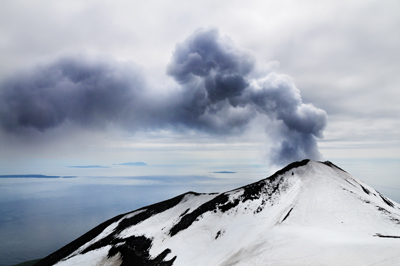
#3: Cathedral Peak Sunset
Although it might seem strange, I didn’t immediately jump at the chance to spend my summer in Alaska, and that’s just because there were so many other things I wanted to spend my summer doing, not least of which was backpacking in the Sierra Nevada high country. I had wanted to visit Pioneer Basin, Evolution Valley, and maybe even hike the JMT. And all those plans got shot when I decided to spend the prime summer backpacking months working in the Aleutian Islands.
Even once I returned from Alaska it looked like I wouldn’t be able to get into the Sierras because I immediately had to turn my attention to house-hunting in Santa Cruz. But luck turned out to be on my side and I had a three day window in between finding a house and moving in. Naturally I decided to spend these three days in the high Sierra. Specifically I decided on Cathedral Peak in Yosemite because a) I’d never been there before, and b) there was a great big wildfire happening in the park which I thought might lend some nice color to the sunset.
So I zoomed up to the park, got my wilderness permit, and hit the trail. And the trail hit me back, woof. I’d been living and working at sea level all summer, and now I was trying to power through the mountains at 9000 feet with a 30 pound pack and 12 pounds of camera gear. Needless to say, my pace was slowing within about 200 yards of the trailhead. The lure of a high Sierra lake is a strong one though, and so I pressed on and arrived at Upper Cathedral Lake two hours later, dizzy, dehydrated, and gasping for breath.
Thankfully I acclimated fairly quickly and spent a lovely two days in the area, enjoying the serenity of the backcountry. And as it turned out, the sunsets didn’t disappoint either. On my second and final night camped at Upper Cathedral Lake, I climbed up on some bluffs overlooking the lake and watched as the smoke in the air turned the setting sunlight a rosy gold which seemed to set the very air aglow. And with my camera at hand, I was able to capture an image that made all the discomforts of altitude well worth the price.
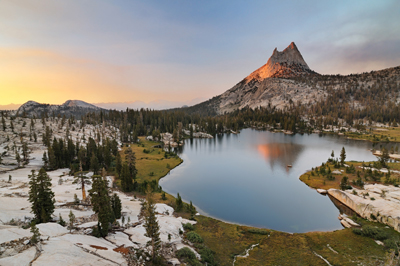
#2: Daily rainbows on Tern Island
Papahanaumokuakea.
I know, that word is tongue-twister of large-scale proportions. But the National Marine Sanctuary it describes is more than worthy of that impressive name. And within that sanctuary is a fairly magical island known as Tern. It’s a place where rainbows and wild animals meet in incredible numbers:
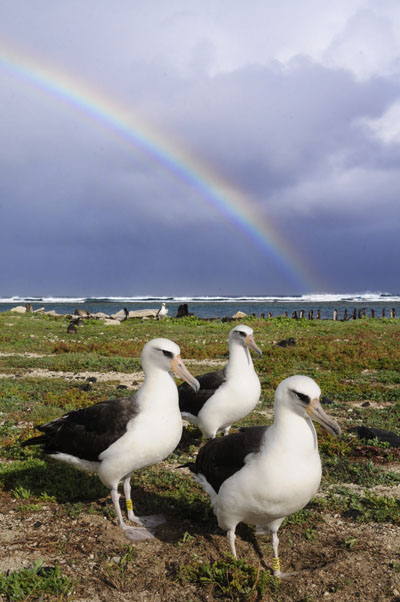
And I had the amazing privilege to spend an entire month there in March of this year. I was there helping out with various seabird biology projects: everything from counting Red-Footed Booby eggs, to capturing and putting identification bands on Christmas Shearwaters, to satellite tagging and tracking Laysan and Blackfoot Albatross.
Rarely do we ever get a chance to view wild animals up close, and so for me, the opportunity not only to live on the same island as over a hundred thousand seabirds, but also to observe, touch, and interact with them day after day was an experience to be cherished. And by doing so I gained a profound respect for these animals, their lives on the ocean, and their intelligences. You only have to look at an albatross (an animal which spends 95% of it’s life flying around the open ocean and can live over 60 years) to see the spark of intelligence in its eyes:
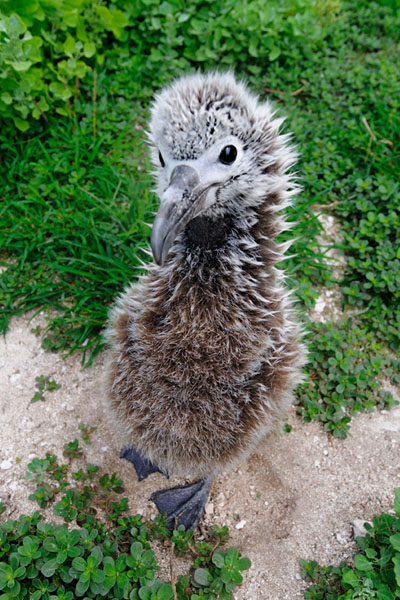
And you can’t help but be amazed when one ambles up to you, looks into your eyes, and using its bill like a set of hands, tries to determine exactly what you are by nipping, pulling, and prodding your fingers, hair, shoes, and clothes. Then it might turn into the wind and take off into a gliding flight as graceful and beautiful as any movement in the animal kingdom.
Now, I’ve been speaking only about albatross. Tern Island is covered with a multitude of equally amazing birds, including Red-Footed and Masked Boobies, Noddies, Frigatebirds, Shearwaters, and the island’s namesake: Terns, which nest there in a few varieties (white, gray-backed, and sooty) and uncountable numbers. Each day brought about new interactions with all of these species which were a constant reminder of how special the island is.
Even if the animals weren’t enough, Tern Island has a physical beauty straight out of a tropical fantasy. Located in a series of atolls about halfway between Oahu and Midway, smack dab in the middle of the Pacific Ocean, Tern is blessed with warm weather, coral reefs, deep blue skies, and crystal-clear waters:
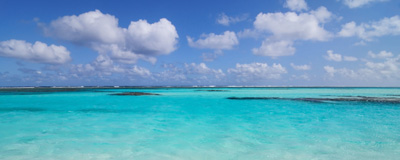
The idyllic location and the astounding wildlife are why my month on Tern Island rates at #2 on my most memorable experiences of 2009.
#1: Being in a Dr. Seuss fantasy on Gareloi Island
Picture any world created by Dr. Seuss and you’ll be imagining something like this: steep pinnacles topped with puffs of long grass; deep crevices populated by warbling, goofy creatures; bizarre landscapes and weather; and strange-looking plants every color of the rainbow. Well, stepping onto Gareloi Island in the Aleutians sent me directly into that seemingly fantastical world.
I had the opportunity to spend two months on Gareloi this summer as part of a team doing conservation work with a bird species called the Crested Auklet. I was expecting the island to be remote and wild, but I was totally unprepared for the unique wonder of the place once I actually arrived. Simply put, I’ve never seen, nor could I have imagined, any place like it.
First things first: Gareloi is a volcano one mile high, and only six miles wide at its widest. It sits in the middle of the North Pacific, with nothing above it but the Bering Sea, and nothing below it but thousands of miles of open ocean.
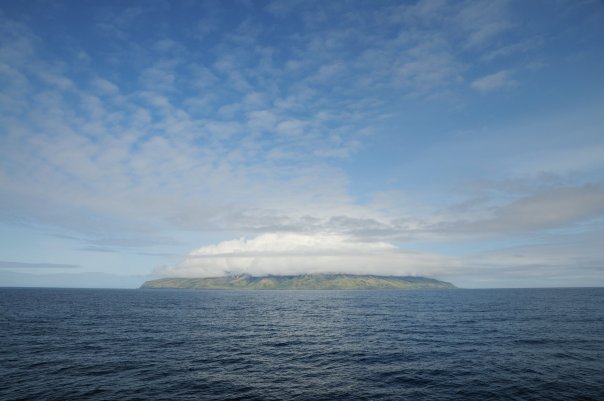
Because of its remoteness and unique geology, Gareloi is home to a mind-boggling array of unusual plants, such as Seawatch plant, a giant head-of-broccoli type thing which is pollenated not by bees, but by a couple of different species of fly.
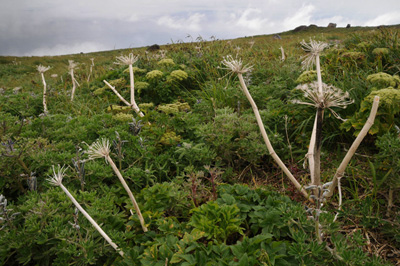
The island also had more species of wildflower than I could count, lupine being the only kind I actually knew by name.
Thanks to Gareloi’s inaccessibility, it provides refuge for a large number of exotic birds, including tufted and horned puffins, snow buntings, peregrine falcons, bald eagles (in fact we a had an eagle couple raising two chicks on a sea-stack not 200 yards from our camp), pigeon guillemots, and four kinds of auklets: least, whiskered, parakeet, and crested.
These last birds, the auklets, were one of the most incredible parts of the island. They live in colonies of almost 1.5 million birds, and when the flocks would return at the end of the day from foraging in the ocean, they’d come as pulsating, massive, nearly-solid clouds of birds.
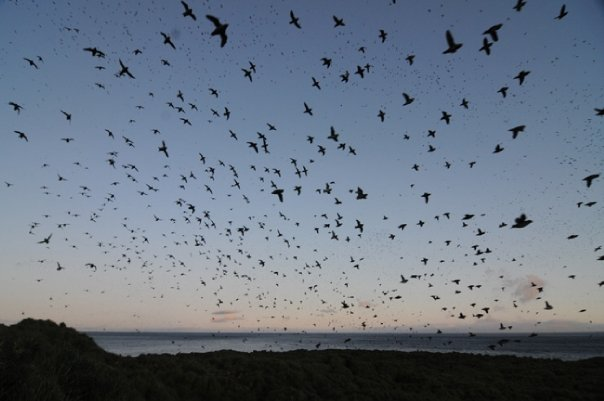
Then they would amass in the hundreds on the established social platforms in the colony, their bright orange bills, Elvis-Presley curls, and warbly coobledy-cooble calls making them seem like the goofiest birds ever.
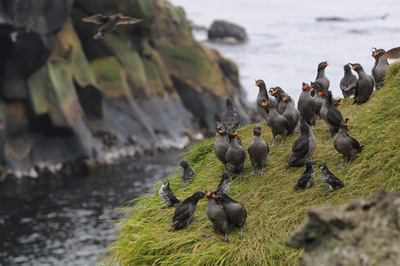
Their colony itself was another wonder entirely. Formed out of fractured volcanic lava flows, the place was a labyrinth of honeycombed chasms, tunnels, caves, and crevices. Seemingly solid at first glance due to the ubiquitous cover of long grass, the colony was actually more like a series of combs stacked side-by-side with the teeth pointing up. It was possible to be standing on two side-by-side rocky pedestals, straddling a 6-inch wide chasm that was 12 or 15 feet deep. Simply unreal.
The rest of island had a surreal magnificence to match. Steep-sided and topped with a thick snow pack, the island was covered with hundreds of diurnal streams which would only run late in the day once enough snow had melted to send the liquid water downhill. These streams cascaded down the lava rock and formed incredible waterfalls; in our small corner of the island we had more than a dozen 30-, 40-, and even 50-foot falls. One day, at the end of a long hike, we found a falls that cascaded more than 500 feet down steep cliffs to land at the ocean’s edge:
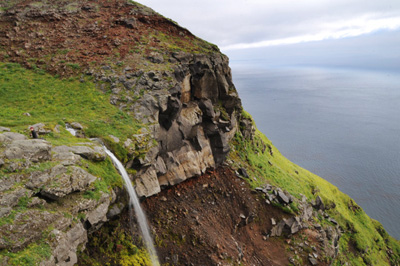
And even the non-terrestrial features of Gareloi were nothing short of awesome. The island is a single point of land in thousands of miles of sea. And because of that, the weather we saw was quite spectacular. Although we frequently had overcast, rainy, and windy days, on the clear days, the unusual wind and water circulation patterns around the island would create clouds like nothing I’ve ever seen. We’d have clouds shaped like horseshoes, giant spherical clouds, clouds that looked like gargoyles, and perhaps most commonly: beautiful, ominous, looming lenticular clouds:
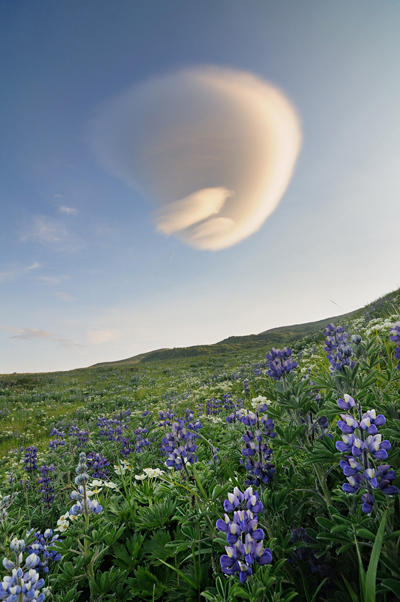
Every day on Gareloi brought something new, some weird wonder I couldn’t have imagined. The island was incredibly beautiful, incredibly isolated, and incredibly unique. And that’s why my two months there go down as my most memorable experience of 2009.
—————————————————-
I hope you’ve enjoyed reading this post as much as I have writing it and remembering all the interesting and exciting things that happened this year. I also hope you have a great New Year and that 2010 brings as many new experiences, wonders, and challenges as 2009 did.
~Josh
share this article:

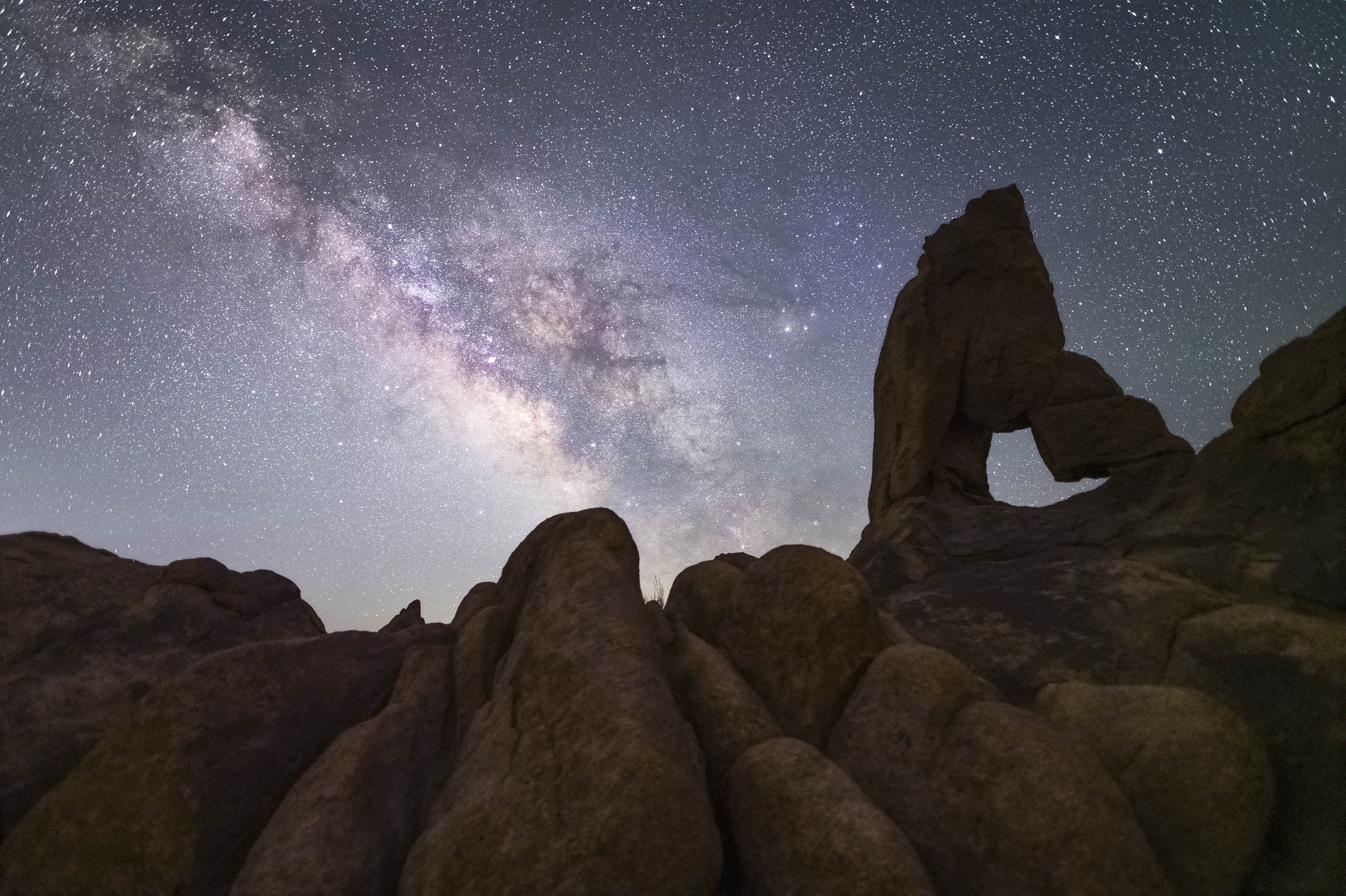
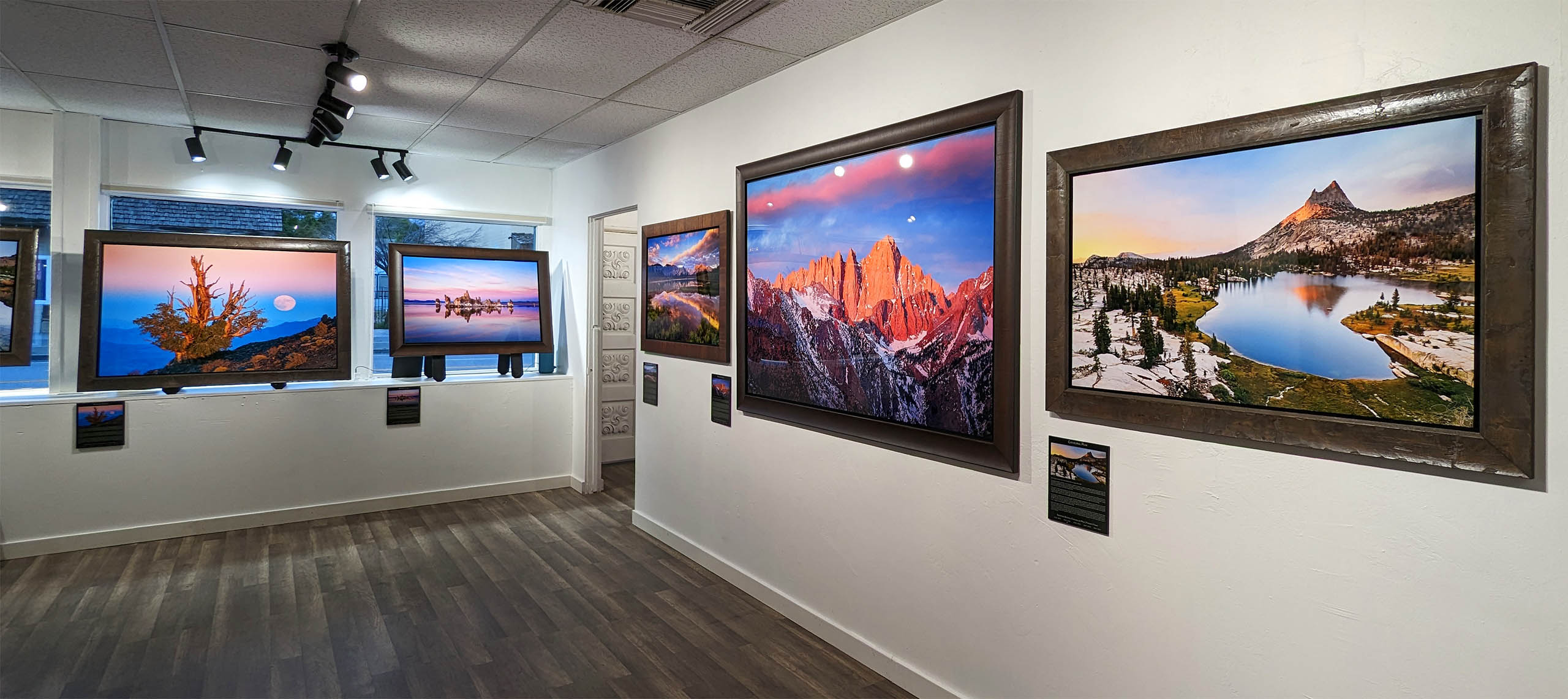
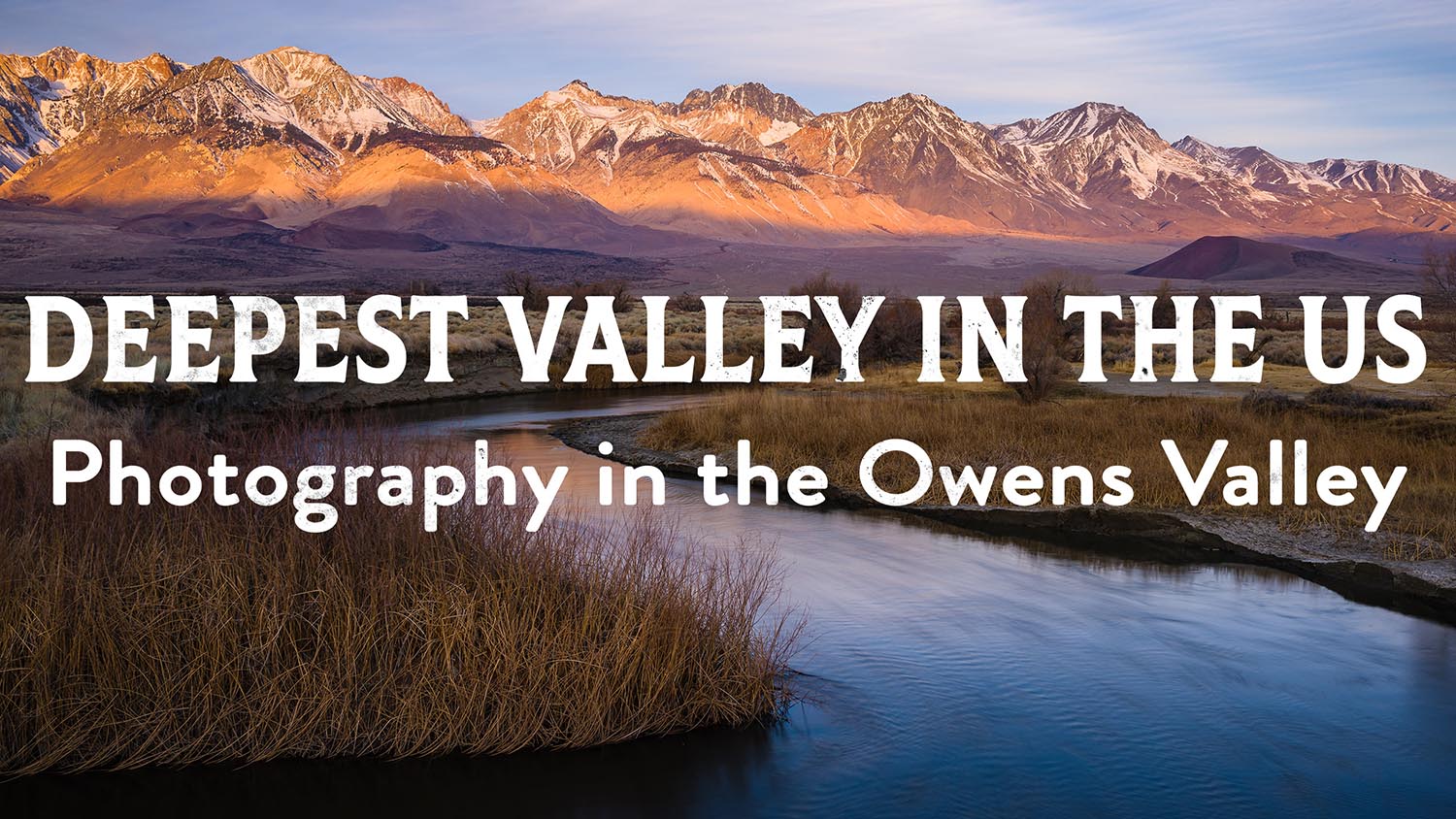
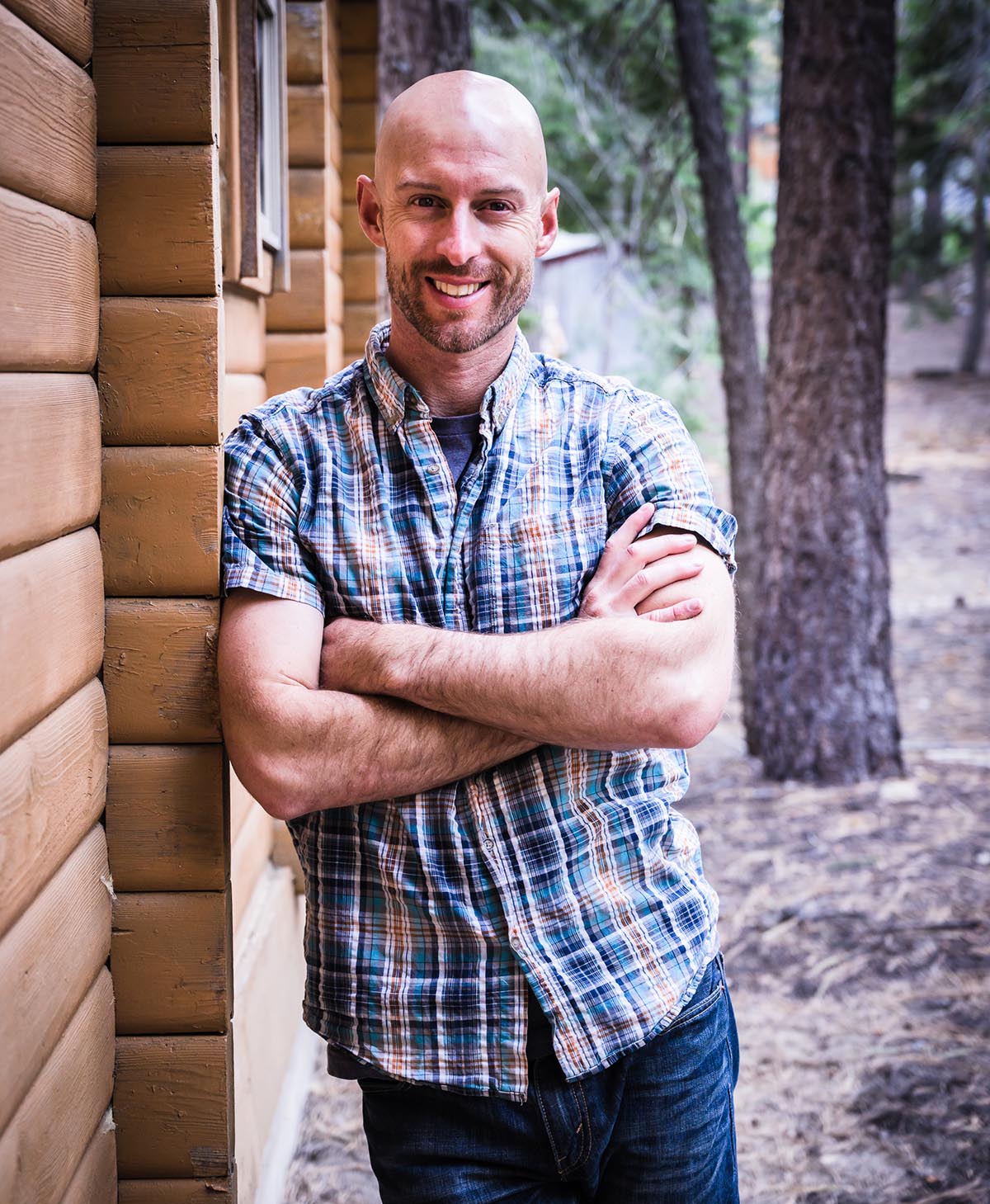

4 Responses
Thank you very much, ladies!
Each time I see your work I am more impressed by your talent. Not only do you take incredible photo’s, but your narrative account brings you right there. I look forward to your “Coffee Table” book some day.
Keep up the good work! May 2010 bring you much success.
PS, I would like to comment on a few other items you wrote about, like the deserted military town; God, that reminds me of Fort Ord…used to live in Stilwell Park; sooo sad; remembering the life that used to be there; now all dilapidated and neglected. Well, now that my dial-up has finally loaded ALL the photographs, I must say that last one is truly breathtaking. Thanks again for sharing your talent so generously!Happy New Year! Kat
Wow, Joshua, Thank you for taking the time to write this stunning account of your adventures! I hadn’t had time to look at your site, so I was pleasantly surprised by the beauty and prose of your writing as well, especially how you describe the glacier sounds, I loved your pet portraits, and am so glad you have had success at your shows…very relieved that you survived your ocean shoots; and I got a kick from the little red arrows on your “publication”…so cute! I’ll try to check in with you more often!
Kat Aburto from Salinas